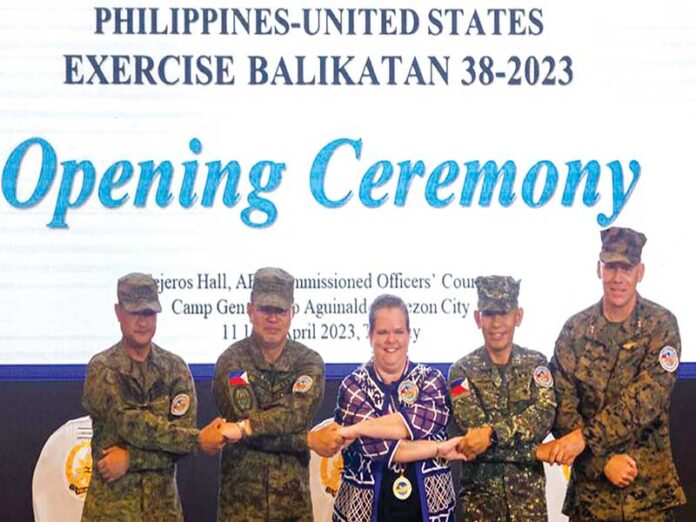The Philippines and the United States are strengthening their military alliance.
On April 11, thousands of Philippine and American soldiers began staging their biggest military exercise in decades off the disputed waters of the South China Sea.
This was followed by a top-level meeting of defense and foreign affairs officials of the two countries in Washington D.C. to affirm the longstanding relationship between the Philippines and the U.S.
The annual military drill by the longtime treaty allies is called Balikatan, which is Tagalog for “shoulder-to-shoulder”.
The exercises will run up to April 28 and involve more than 17,600 military personnel.
“The relationships that we have, that we build into these exercises, will make us faster to respond to conflict, crisis, humanitarian assistance and disaster relief,” U.S. Marine Maj. Gen. Eric Austin said.
About 12,200 U.S military personnel, 5,400 Filipino forces and 111 Australian counterparts are taking part in the exercises.
The drills are the largest since Balikatan started three decades ago.
In a live-fire drill the allies will stage for the first time, U.S. and Filipino forces will sink a target ship in the Philippine territorial waters off the western province of Zambales on April 26.
In western Palawan province, which faces the South China Sea, the exercises will involve retaking an island captured by enemy forces, Logico said.
China has warned against the intensifying U.S. military deployment to the region.
Chinese Foreign Ministry spokesperson Mao Ning said in a regular news briefing in Beijing that it “would only lead to more tensions and less peace and stability in the region.”
The Balikatan exercises opened in the Philippines a day after China concluded three days of combat drills that simulated sealing off Taiwan.
Meanwhile, top U.S. and Philippine foreign affairs and defense officials held the 2+2 Ministerial Dialogue in Washington D.C. to “reforge” their alliance.
Foreign Affairs Secretary Enrique Manalo and Defense chief Carlito Galvez Jr. and their American counterparts Secretary of State Antony Blinken and Defense Secretary Lloyd Austin 3rd shared the need to modernize relations between Manila and Washington.
“Our security alliance is an enduring source of strength for both of our nations,” Blinken said in a joint press conference with Manalo, Austin and Galvez.
“Today we focused on ways to continue our close partnership under the Enhanced Defense Cooperation Agreement (EDCA) so that our forces can work even more closely together,” Blinken said on April 11.
Austin said, “We all reaffirmed today that our Mutual Defense Treaty remains the bedrock of our cooperation.”
Galvez, on the other hand, said the Philippine-US partnership has “weathered many challenges in the past and continues to stand strong today.”
“We reaffirm our commitment to the Mutual Defense Treaty, which is our cornerstone of our partnership,” Galvez said.
Manalo confirmed that during the meeting, “we redoubled our commitment to modernizing the Philippine-US alliance, recognizing that our partnership will need to play a stronger role in preserving an international rules-based order.”
There are now nine sites that will house US troops and equipment under EDCA.
By Rey Fortaleza



